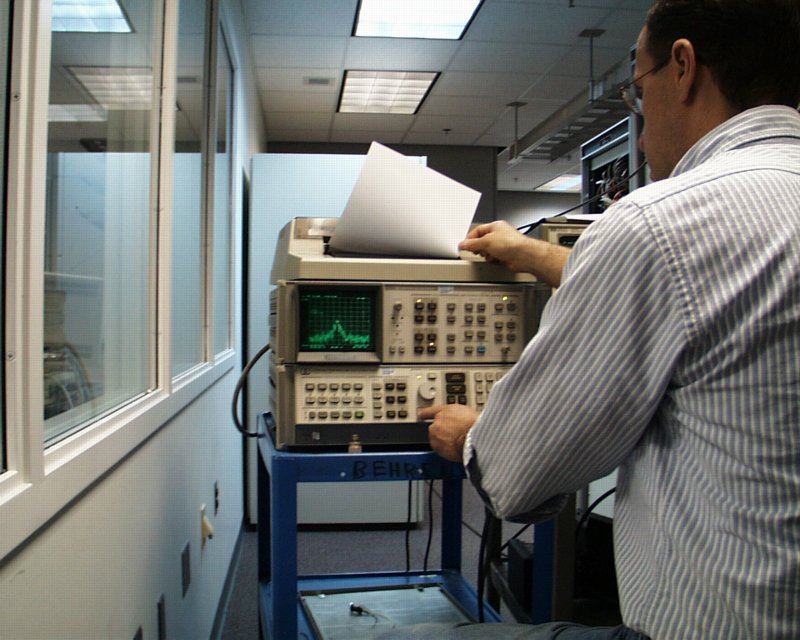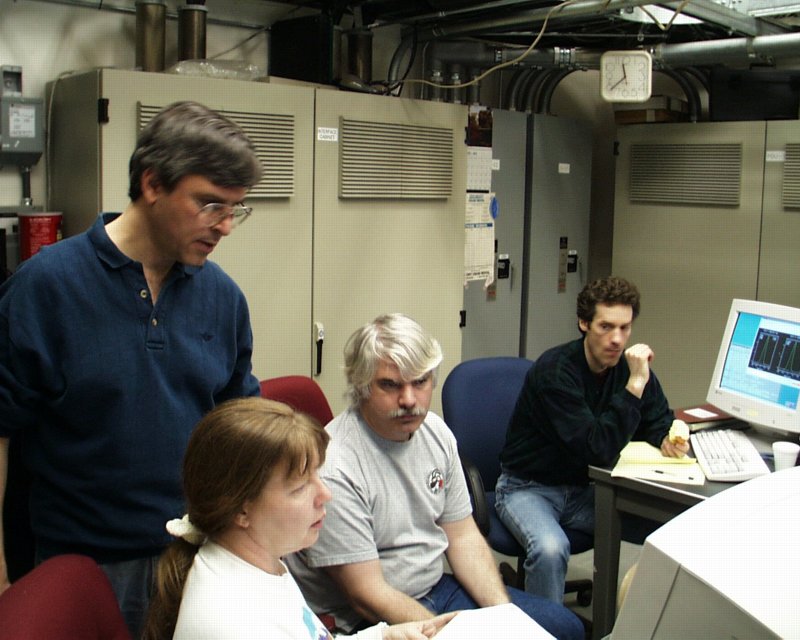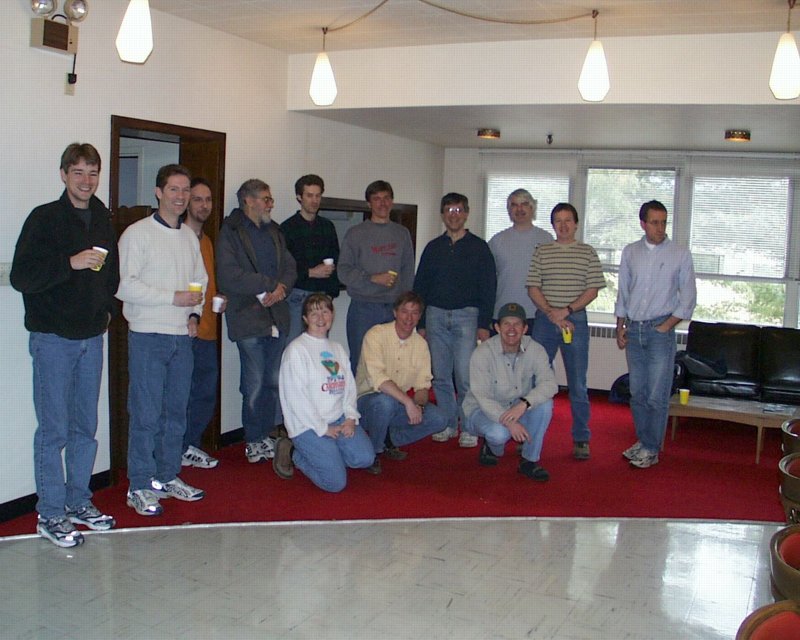
GBT News Update
1 April 2001
The GBT's first new, scientific observations were successfully conducted last week (March 24-26). The observations were S-band bi-static radar imaging observations of Venus and a close-passing asteroid (2001 EC 16), done in participation with Arecibo Observatory. The PI of the program was Don Campbell (Cornell), and the on-site CO-Is were Jean-Luc Margot (Caltech) and Bruce Campbell (Smithsonian Inst.). These were challenging first science observations for the GBT as they were time-critical, corresponding to the Venusian inferior conjunction and requiring synchronization with the Arecibo radar. The observations were conducted over three days, and went smoothly each day. Photos from the first science project appear below. A second installment of the observations will be done this week on April 3,4.
As described in the previous news update, observations will be suspended after the Venus observations conclude this week so that further analysis of the azimuth track slippage problem can be conducted. The NRAO staff will be busy with system work during this time.
P. Jewell
M. McKinnon

Fig. 1. Mike Stennes observes the radar echo from Venus on the spectrum analyzer in the GBT Equipment Room.

Fig. 2. The control team in the GBT Servo Room during the Venus observations. (L-R: Ron Maddalena, Donna Stricklin, Joe Brandt, Dana Balser)

Fig. 3. The team celebrates in the Residence Hall lounge after the first observations on Saturday, 24 March 2001. (L-R, standing: Jean-Luc Margot, Bruce Campbell, Greg Black, Frank Ghigo, Dana Balser, Jim Braatz, Ron Maddalena, Joe Brandt, Pete Chestnut, Mike Stennes; L-R, kneeling: Donna Stricklin, Glen Langston, Mark McKinnon)